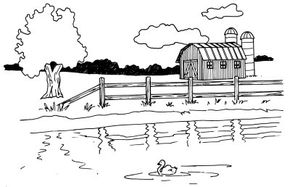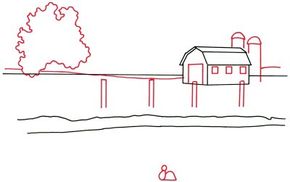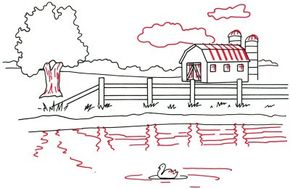This barn and pond landscape scene has a good variety of elements to draw -- water, building, plants, and animals. The picturesque farm scene even includes an adorable duck, floating happily upon a pond.
In this article, we'll teach you how to draw this scene in just five steps. You can draw it freehand while looking at your computer monitor, or you can print out this article to get a closer look at each step.
Advertisement
On each page, we'll show you an illustration of each step and then give you a description of how to draw it. Follow the red lines in each illustration to learn exactly what to draw in that step. The lines drawn in previous steps are shown in gray.
Ready to get started? Head to the next page for the first step.
Advertisement




